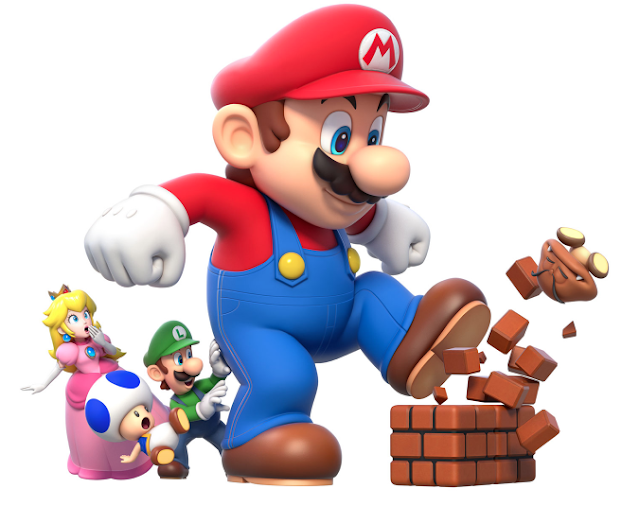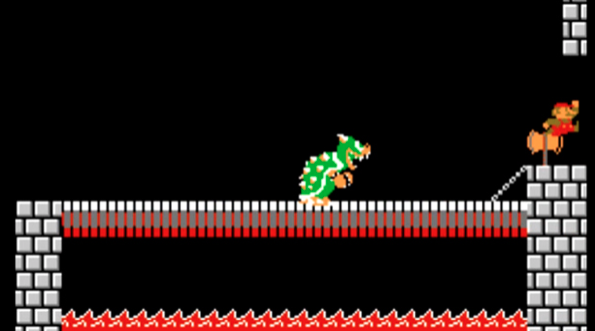Bowser Action Figure
Bowser Action Figure
irst debuting in the 2000 Nintendo 64 game Mario bowser figure Tennis to polarizing reception from the media, Waluigi has since attained a cult following, especially helped through his use as an Internet meme.
Waluigi's first two appearances were in the Nintendo 64 and Game Boy Color versions of Mario Tennis, establishing himself as bowser Luigi's supposedly long time rival and Wario's doubles partner, whom he would remain partners with for most future installments, the one exception being Mario Tennis: Power Tour, the only time that he appeared in-game without Wario. Since his introduction, Waluigi has appeared as a playable character in every Mario sports game. Notably in Mario Golf: Toadstool Tour and Mario Power Bowser Action Figure Tennis, he holds up the sign for Camelot Software Planning to signify the game developers in the opening movies.
Alongside Princess Daisy, Waluigi would also join the Mario Party series starting with Figure party 3, where he owns an island filled with traps and explosives. In the game's story mode, he is faced as the penultimate foe after he defeats Bowser.
Ultimately, the decision to put Mario’s first big 3D adventure on a new console wasn’t made because Nintendo felt they needed Mario bowser figure more processing power, but because the SNES controller didn’t have enough buttons for a 3D action game. Bowser Action Figure Basically, if the SNES controller had possessed an analog stick, Mario’s first 3D game might have been Super Mario 16 instead of Super Mario 64.
Super Mario 64 may have lifted design ideas from an obscure PlayStation game.
The world is full of winners and losers. Marios and Crocs.
As we discussed in our article about Star Fox, a small independent British developer named Argonaut Software was largely responsible for Nintendo’s move towards 3D gaming in the mid-’90s. They taught Nintendo how to make 3D games, wario stuffed animal designed the Super FX chip, and were the programming muscle behind Star Fox.
After working successfully with Nintendo for years, Argonaut pitched the idea to take 3D gaming to the next level by creating an bowser ambitious 3D platformer, the likes of which had never been seen before. The game would have starred Yoshi, and, Bowser Action Figure according to Argonaut founder Jez San, the proposed game’s look and Mario bowser figure structure was very similar to that of Mario 64. Surprisingly, Nintendo rejected the pitch, which lead to the end of the fruitful Argonaut-Nintendo relationship.
Argonaut would shop their Yoshi game around to other publishers, and, ultimately, it would be appear on the PlayStation and Sega Saturn as Croc: Legend of the Gobbos. Unfortunately, the time it took to find a new publisher meant that Nintendo beat Argonaut to market with Mario 64 by around a year, so Croc ended up looking like an imitation, even though the exact opposite was true. Now, obviously, Nintendo infused their game with their Bowser Action Figure own special magic, and Mario 64 is overall a much better game than Croc, but still, it’s interesting to know that original spark of inspiration came from outside Shigeru Miyamoto’s sprightly noggin.
Super Mario 64 wasn’t just the Italian plumber’s first 3D adventure, it was also the first time we heard the guy’s voice. Sure, Mario spoke in cartoons and commercials, where he was usually given a husky Brooklyn accent, but he’d always been the strong silent type in-game. Eventually, Nintendo went with a sort of mama mia-version of Mickey Mouse, courtesy of voice actor Charles Martinet, which some Nintendo fans bowser weren’t crazy about. Little did they know what they were almost subjected to. Mario’s original voice, which Bowser Action Figure you hear in the above beta footage of Mario 64, was ear-poppingly shrill. Basically, he sounded like Toad dialed up another half-dozen notches on the unbearableness scale. We dodged a major bullet, folks.
irst debuting in the 2000 Nintendo 64 game Mario bowser figure Tennis to polarizing reception from the media, Waluigi has since attained a cult following, especially helped through his use as an Internet meme.
Waluigi's first two appearances were in the Nintendo 64 and Game Boy Color versions of Mario Tennis, establishing himself as bowser Luigi's supposedly long time rival and Wario's doubles partner, whom he would remain partners with for most future installments, the one exception being Mario Tennis: Power Tour, the only time that he appeared in-game without Wario. Since his introduction, Waluigi has appeared as a playable character in every Mario sports game. Notably in Mario Golf: Toadstool Tour and Mario Power Bowser Action Figure Tennis, he holds up the sign for Camelot Software Planning to signify the game developers in the opening movies.
Alongside Princess Daisy, Waluigi would also join the Mario Party series starting with Figure party 3, where he owns an island filled with traps and explosives. In the game's story mode, he is faced as the penultimate foe after he defeats Bowser.
Ultimately, the decision to put Mario’s first big 3D adventure on a new console wasn’t made because Nintendo felt they needed Mario bowser figure more processing power, but because the SNES controller didn’t have enough buttons for a 3D action game. Bowser Action Figure Basically, if the SNES controller had possessed an analog stick, Mario’s first 3D game might have been Super Mario 16 instead of Super Mario 64.
Super Mario 64 may have lifted design ideas from an obscure PlayStation game.
The world is full of winners and losers. Marios and Crocs.
As we discussed in our article about Star Fox, a small independent British developer named Argonaut Software was largely responsible for Nintendo’s move towards 3D gaming in the mid-’90s. They taught Nintendo how to make 3D games, wario stuffed animal designed the Super FX chip, and were the programming muscle behind Star Fox.
After working successfully with Nintendo for years, Argonaut pitched the idea to take 3D gaming to the next level by creating an bowser ambitious 3D platformer, the likes of which had never been seen before. The game would have starred Yoshi, and, Bowser Action Figure according to Argonaut founder Jez San, the proposed game’s look and Mario bowser figure structure was very similar to that of Mario 64. Surprisingly, Nintendo rejected the pitch, which lead to the end of the fruitful Argonaut-Nintendo relationship.
Argonaut would shop their Yoshi game around to other publishers, and, ultimately, it would be appear on the PlayStation and Sega Saturn as Croc: Legend of the Gobbos. Unfortunately, the time it took to find a new publisher meant that Nintendo beat Argonaut to market with Mario 64 by around a year, so Croc ended up looking like an imitation, even though the exact opposite was true. Now, obviously, Nintendo infused their game with their Bowser Action Figure own special magic, and Mario 64 is overall a much better game than Croc, but still, it’s interesting to know that original spark of inspiration came from outside Shigeru Miyamoto’s sprightly noggin.
Super Mario 64 wasn’t just the Italian plumber’s first 3D adventure, it was also the first time we heard the guy’s voice. Sure, Mario spoke in cartoons and commercials, where he was usually given a husky Brooklyn accent, but he’d always been the strong silent type in-game. Eventually, Nintendo went with a sort of mama mia-version of Mickey Mouse, courtesy of voice actor Charles Martinet, which some Nintendo fans bowser weren’t crazy about. Little did they know what they were almost subjected to. Mario’s original voice, which Bowser Action Figure you hear in the above beta footage of Mario 64, was ear-poppingly shrill. Basically, he sounded like Toad dialed up another half-dozen notches on the unbearableness scale. We dodged a major bullet, folks.
Since her debut, Peach has appeared in installments related to the Mario game series for over three decades. Peach is occasionally a supporting character in mainstream games and almost always playable in spin-off installments. Her most prominent appearance to date is as the heroine of Super Princess Peach.
Peach's initial design had been conceived by Shigeru Miyamoto, with some of his suggestions to Yoichi Kotabe being incorporated into the final design, in particular making her eyes look more "cat-like." Before Kotabe conceived Peach's finalized character design, a couple of prototype designs were created for the character. One such design, seen on the Figure Bros. Japanese box art, depicts her with a long-sleeved dress, no gloves, strawberry-blonde hair, and crown jewels with no distinct colorations. Another prototype, Bowser Action Figure seen in the 1987 Japanese strategy guide How to Win at Super bowser Bros., portrays her as a Toad rather than as a human, having a mushroom cap instead of natural hair, plus a simple tiara and a gown reminiscent of Aurora from Disney's Sleeping Beauty, whom she somewhat currently resembles.
In the Super bowser Bros. film, Bowser is portrayed by Dennis Hopper and is called President Koopa. He is also briefly referred to as King Koopa. This incarnation is almost entirely human in appearance, with blonde hair he gels in the shape of a crown, and he frequently wears a black business suit and tie. However, after brief exposure to his own evolution-reversing device by the Figure Bros., he starts occasionally possessing some reptilian Bowser Action Figure traits. The climax of the film sees Koopa devolve into an enormous green Tyrannosaurus rex to battle the Figure Bros., but he is further devolved into primordial ooze.
Miyamoto named him Daimaō Kuppa. Kuppa came from the Japanese name for gukbap, a Korean dish. Miyamoto had also considered the names Yukke and Bibinba, also Japanese names of Korean dishes (육회 yukhoe and 비빔밥 bibimbap respectively). The Korean name for the character Bowser/Kuppa is not Gukbap, but 쿠파 Kupa, Bowser Action Figure which is essentially a phonetic round-trip translation. The name was anglicized Kuppa rather than Koopa in the Japanese versions up until the release of Super bowser World.
Peach has always been depicted as a blonde in video game artwork, although it was originally of a darker, more strawberry-blonde shade (or in the case of the Japanese packaging, a dark blonde shade). However, due to the graphical limitations of the NES hardware, her on-screen sprite in the earlier bowser Bros. games displayed her with red or brown hair, and as a result, she was depicted as a redhead in the DiC Entertainment cartoons. Starting with Super Figure World for the SNES, her in-game appearances had Bowser Action Figure her proper hair color. On a similar note, her dress had always been depicted as pink in video game artwork, although because of the aforementioned graphical limitations of the NES hardware, her on-screen sprite in the Super bowser Bros and The Lost Levels depicted her as wearing a white dress with red highlights, with her only gaining a pink dress starting with the overseas version of Super Mario Bros 2. This depiction of her trademark dress would later be reused for her Fire Peach form in Super Mario 3D World. Peach's classic main dress had a sash around the waist instead of panniers and was darker pink below her knees, but otherwise does not differ greatly from the modern/current main dress introduced with the GameCube-era games, starting with Super bowser Sunshine and Mario Party 4, although the subsequent Paper Mario: The Thousand-Year Door installment marked the original dress's final appearance.






https://youtu.be/rcd8T1sLhCE
ReplyDelete